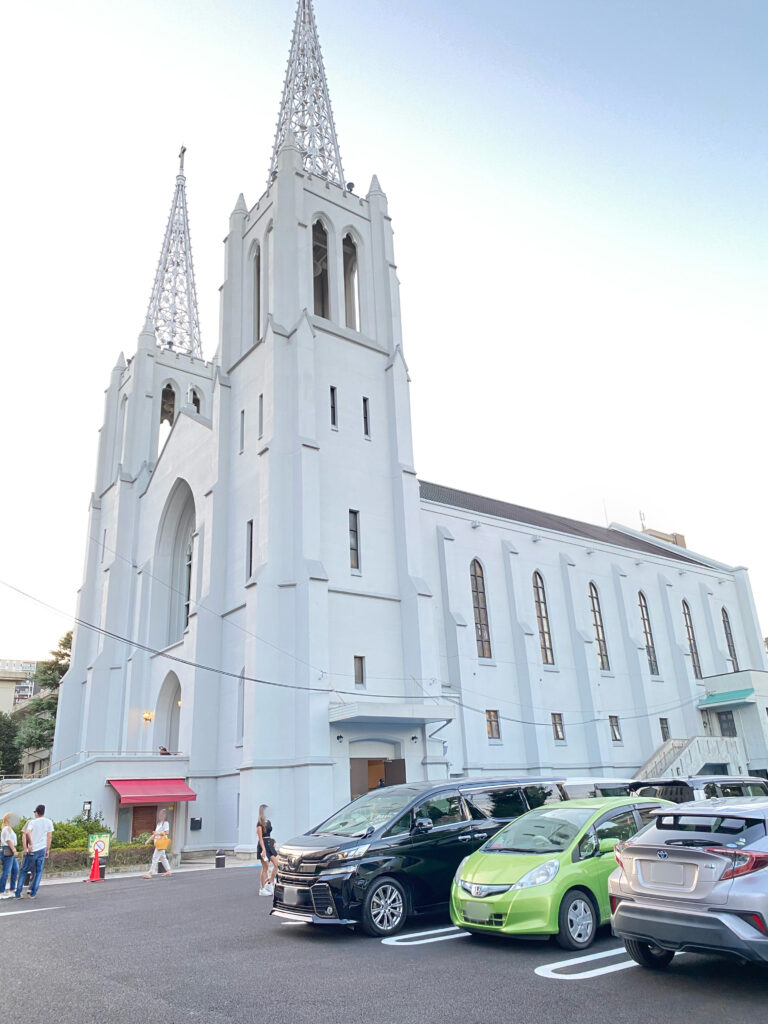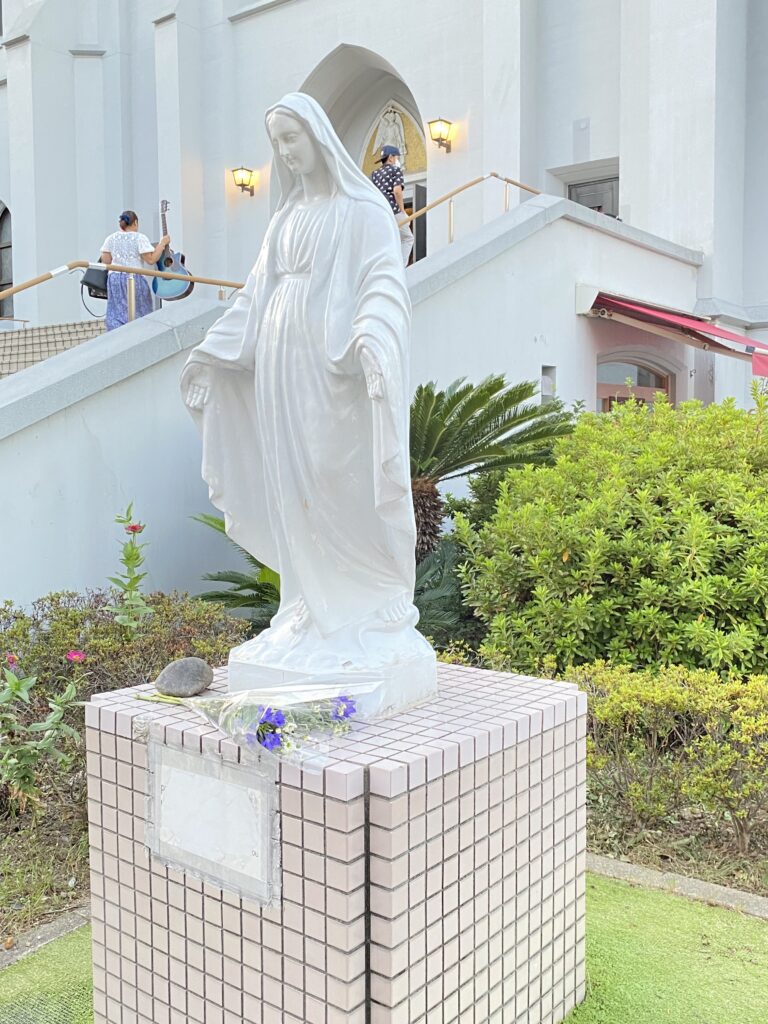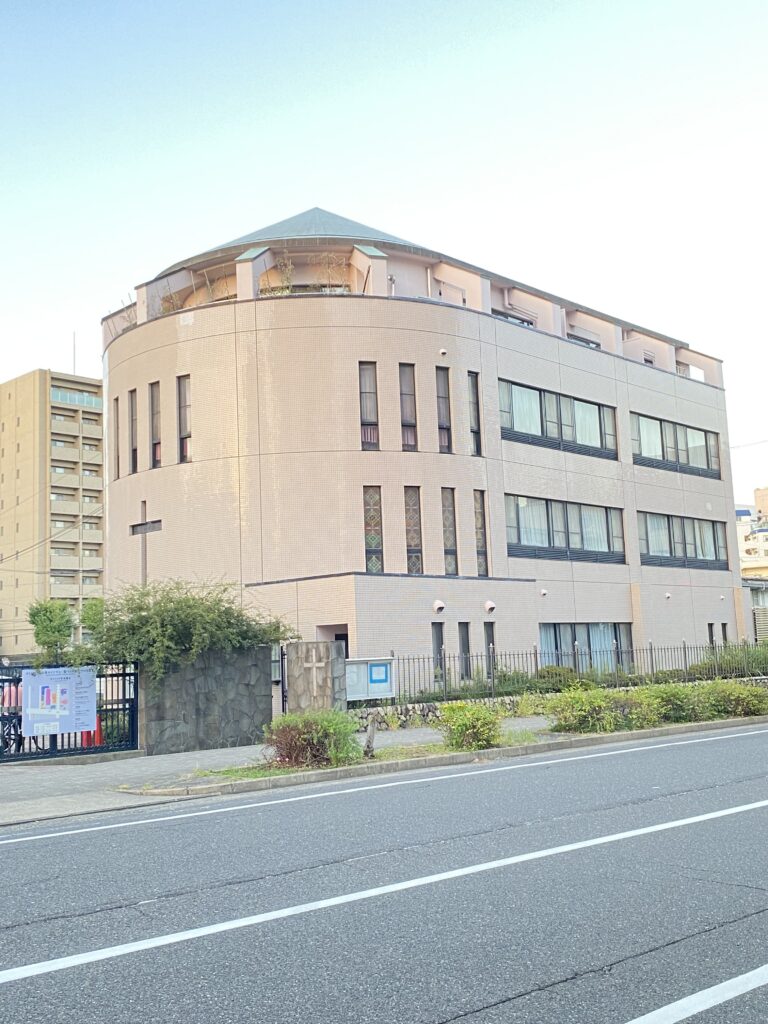Today I would like to introduce you to Nunaike Catholic Church, which is also listed as a National Cultural Property.
1.How many Catholics are there in Japan?
According to the Catholic bishops’ conference of Japan (the central organisation of the Catholic Church in Japan), the current figure is 0.335%. This is the total number of believers recorded in the parish registers. Although foreign believers are probably included, it is safe to assume that this is close to the number of Japanese believers, as it is rare for foreign believers to be registered in the Church at all, even if they usually attend church services.
It is clear that they are an extremely small minority, only about three per 1,000 people.
However, after Japan’s defeat in World War II, the ruling class in Japan converted to Christianity, especially the Catholic Church, the largest denomination.
As a result, one gets the impression that Catholics are relatively well-off members of Japanese society.
The Empress Emerita Michiko (mother of the current Emperor) also came from a Catholic family, and two of the Prime Ministers were also Catholics.
Markun himself is a Catholic.
Today I went to the evening mass at Nunoike Catholic Church because I missed it in the morning.
2. What kind of church is Nunoike Catholic Church?


Nunoike Catholic Church is not just a church, but a church with a bishop who unites the priests. This kind of church is called a cathedral. A church called a cathedral, whether large or small, is the head of the local church.
The Nagoya diocese, which is administered by the Nunoike Catholic Church, covers the prefectures of Aichi, Gifu, Fukui, Ishikawa and Toyama. This is quite a large area.
As the representative church in these areas, it must be able to respond to a wide range of people.
Mass is also celebrated in Japanese, English and Tagalog.
The morning mass is in Japanese, but the evening mass is in different languages depending on the week.
| Week 1 | Tagalog ( Filipino Language) | PM6:00 |
| Week 2 | English | PM6:00 |
| Week 3 | Japanese | PM6:00 |
| Week 4 | English | PM6:00 |
| Week 5 | Tagalog( Filipino Language) | PM6:00 |


Cooperating with Protestants as well as Catholics to bring Christ’s teachings to life in society.
2. Mass in the church
Today was week 4, so it was in English.
At the English Mass, most of the people were Filipinos.
Also, at the Japanese Mass, there were many old people (especially women) who looked like they were about to go to heaven, and I rarely saw young people (especially men), but at the English Mass, there were many young Filipinos who had come as migrant workers (or as students), which surprised me.
There were also several young white men of high school or university age.
Unfortunately, the Mass is a series of rituals, so there are certain phrases to say, but it is not just the Japanese that is translated into English, the music is different, and the Apostles’ Creed is also an old formality, like the Nicene Creed of Constantinople in English, so Markun did not understand it well.
The Bible read today were
Matthew.
20:1-16.
This parable describes a landowner who hires labourers at different times of the day, but pays them all the same. Those hired first are upset, expecting more, but the landowner emphasises that he is being generous and fair, paying the agreed wage and emphasising that his generosity is his to give. The story conveys themes of divine generosity and equality in the kingdom of heaven, and illustrates that spiritual rewards are not always proportional to one’s service or deeds.
3. The collapsing Catholic Church
Sadly, with only 0.3% of the population, the Catholic Church in Japan is in danger of collapse. Even in 2019, before Corona, out of a congregation of about 43,000 faithful, only about 100,000 people actually attended church mass : about one in four. After Corona, this number fell to around 65,000.(from the report of Catholic Bishops’ conference of Japan)
This suggests that almost half of the people who used to go to church were not devoutly religious but stopped going after the church was closed by bishop’s order in response to the Corona measures.
Younger people are also less likely to go to church. I myself rarely see young people in church.
Not only that. The average age of priests in Japan is now over 65. There are no new priests, and this is a worldwide phenomenon, with foreign countries also unable to send priests.
I studied at Sophia University, which is run by the Jesuits in Tokyo. When I was a student, I was taught by professors who were also priests, but none of them are priests anymore, except in the theology department.
Faith has given people a place to belong, not only to seek God, but also as a community. It has been reported in the news that there is a large force of people fiercely resisting Pope Francis’ attempts to bring reform to the melting Catholic Church.
The Catholic Church is already so divided that it cannot be governed by anyone as Pope and cannot be called a Church based on one faith and one doctrine.
Will we, Japanese Catholics, have no choice but to disappear?



コメント